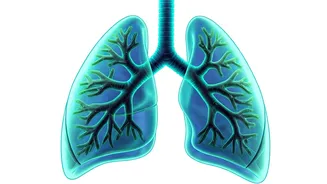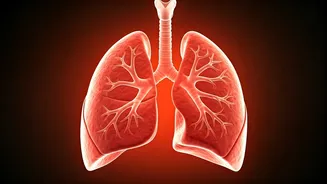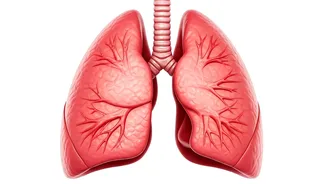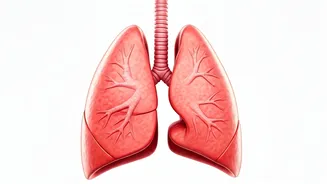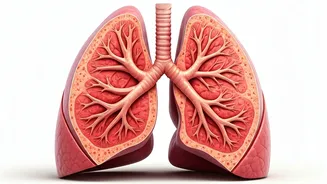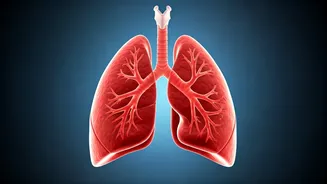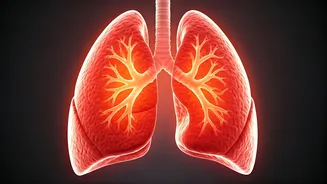Diaphragmatic Breathing Mastery
Diaphragmatic breathing, often called belly breathing, is fundamental for respiratory health, improving lung capacity, and promoting relaxation. To practice,
lie down or sit comfortably. Place one hand on your chest and the other on your abdomen. Inhale slowly through your nose, allowing your abdomen to rise while keeping your chest relatively still. This ensures the diaphragm is engaging, drawing air deep into the lungs. Exhale slowly through your mouth, feeling your abdomen fall. This method maximizes oxygen intake and carbon dioxide expulsion. Repeat this process for 5–10 minutes, several times a day. Regular practice can calm the nervous system, reduce stress, and improve lung efficiency, offering a simple yet profoundly beneficial way to enhance your respiratory health during winter and beyond. This is especially useful in winter when the air quality might be compromised.
Pursed-Lip Breathing Technique
Pursed-lip breathing is a valuable technique, particularly for individuals with conditions like COPD or asthma, or during times when breathing becomes labored. Start by relaxing your neck and shoulder muscles. Breathe in slowly and deeply through your nose for a count of two. Then, purse your lips as if you're about to whistle and exhale slowly and gently through your pursed lips for a count of four. This controlled exhalation creates back pressure in the airways, preventing them from collapsing, and it helps remove trapped air, improving oxygen exchange. Doing this regularly, especially when feeling breathless, can reduce shortness of breath and enhance respiratory function. Practice this several times daily, particularly during periods of exertion, such as walking or climbing stairs, to minimize breathlessness and make everyday activities easier.
Deep Breathing Exercises
Deep breathing exercises, such as alternate nostril breathing (Nadi Shodhana Pranayama) from yoga, promote lung health by optimizing oxygen intake and carbon dioxide release. To start, sit comfortably. Close one nostril with a finger and inhale deeply through the open nostril. Then, close the other nostril and exhale slowly through the first. Next, inhale through the first nostril, close it, and exhale through the second. Continue this pattern. This technique balances the respiratory system and improves focus and relaxation. Another variation is the 4-7-8 breathing exercise, where you inhale for 4 seconds, hold your breath for 7 seconds, and exhale for 8 seconds. This can calm the nervous system and is useful before sleep. Practicing these exercises daily can improve lung capacity and contribute to overall respiratory wellness, especially during winter months when air quality can be poor, offering accessible methods for improving respiratory health.
Cardiovascular Workout Benefits
Engaging in regular cardiovascular exercises, such as brisk walking, jogging, swimming, or cycling, offers substantial benefits for lung function and overall respiratory health. These exercises elevate your heart rate, which increases the demand for oxygen, pushing your lungs to work harder and more efficiently. This leads to improved lung capacity and the strengthening of respiratory muscles. Cardio exercises also aid in clearing mucus from the airways and boost your immune system, which is crucial during winter when the risk of respiratory infections is higher. Aim for at least 30 minutes of moderate-intensity cardio most days of the week. Adjust the intensity and type of exercise to match your fitness level and enjoy activities that you find fun, ensuring consistency. Combining cardio with other lung exercises creates a well-rounded approach to enhance your respiratory health.
Strength Training Importance
Strength training, including exercises like weightlifting or bodyweight training, has benefits that extend beyond muscle building, positively impacting respiratory health. Strength training strengthens muscles, including those involved in breathing, such as the diaphragm and intercostal muscles, which are located between the ribs. Stronger respiratory muscles improve your ability to breathe deeply and efficiently, increasing lung capacity. Regular strength training can also enhance overall endurance and stamina, making everyday activities less taxing on your respiratory system. Incorporate strength training sessions 2–3 times per week, focusing on compound exercises that work multiple muscle groups simultaneously. Ensure proper form to prevent injuries. Remember to consult a healthcare professional before starting any new exercise routine, ensuring it is safe and appropriate for your individual needs. By integrating these exercises, you provide a holistic strategy to improve lung function, preparing your body for the winter months.
